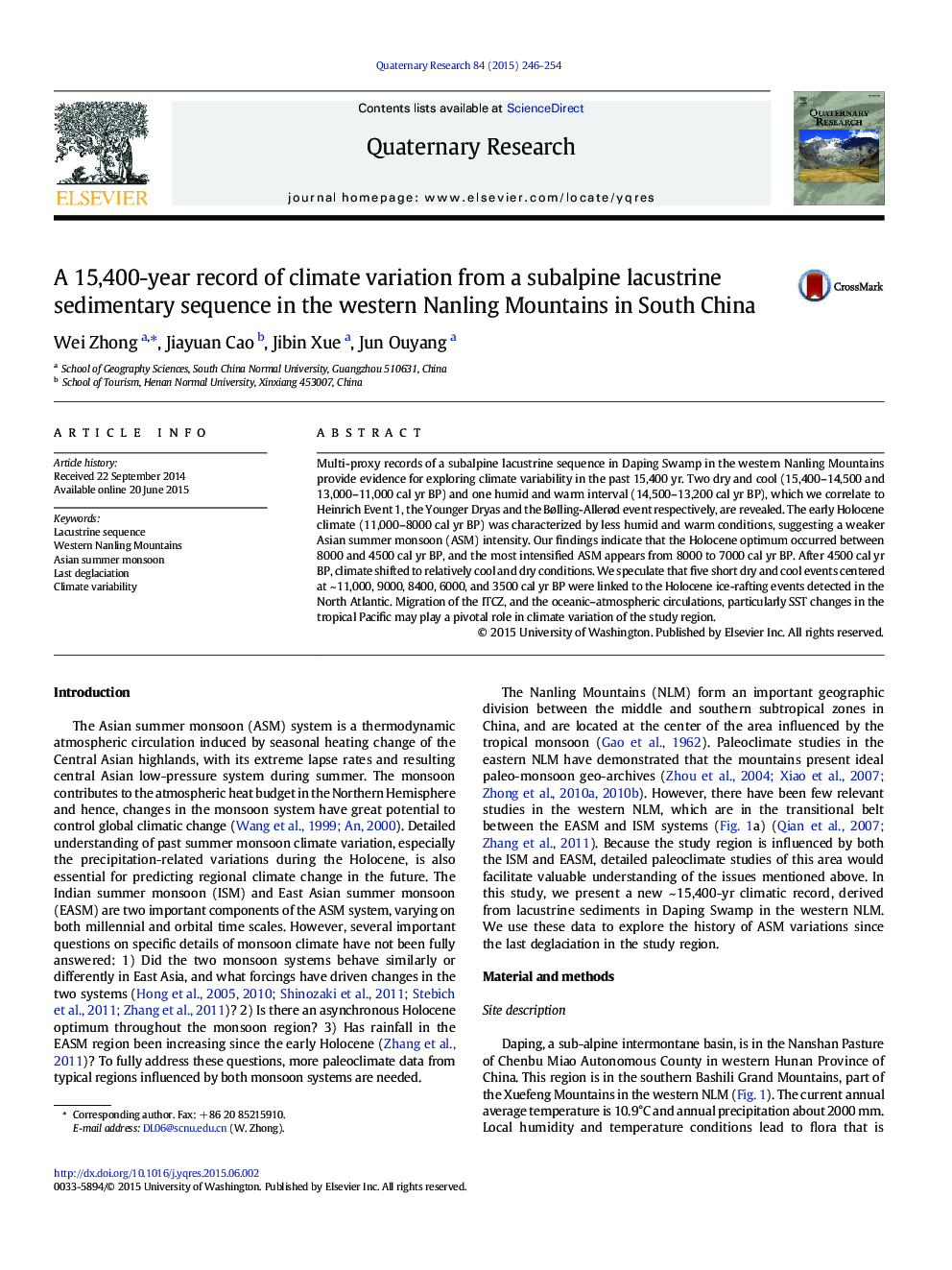| کد مقاله | کد نشریه | سال انتشار | مقاله انگلیسی | نسخه تمام متن |
|---|---|---|---|---|
| 1045117 | 944800 | 2015 | 9 صفحه PDF | دانلود رایگان |
Multi-proxy records of a subalpine lacustrine sequence in Daping Swamp in the western Nanling Mountains provide evidence for exploring climate variability in the past 15,400 yr. Two dry and cool (15,400–14,500 and 13,000–11,000 cal yr BP) and one humid and warm interval (14,500–13,200 cal yr BP), which we correlate to Heinrich Event 1, the Younger Dryas and the Bølling-Allerød event respectively, are revealed. The early Holocene climate (11,000–8000 cal yr BP) was characterized by less humid and warm conditions, suggesting a weaker Asian summer monsoon (ASM) intensity. Our findings indicate that the Holocene optimum occurred between 8000 and 4500 cal yr BP, and the most intensified ASM appears from 8000 to 7000 cal yr BP. After 4500 cal yr BP, climate shifted to relatively cool and dry conditions. We speculate that five short dry and cool events centered at ~ 11,000, 9000, 8400, 6000, and 3500 cal yr BP were linked to the Holocene ice-rafting events detected in the North Atlantic. Migration of the ITCZ, and the oceanic–atmospheric circulations, particularly SST changes in the tropical Pacific may play a pivotal role in climate variation of the study region.
Journal: Quaternary Research - Volume 84, Issue 2, September 2015, Pages 246–254
